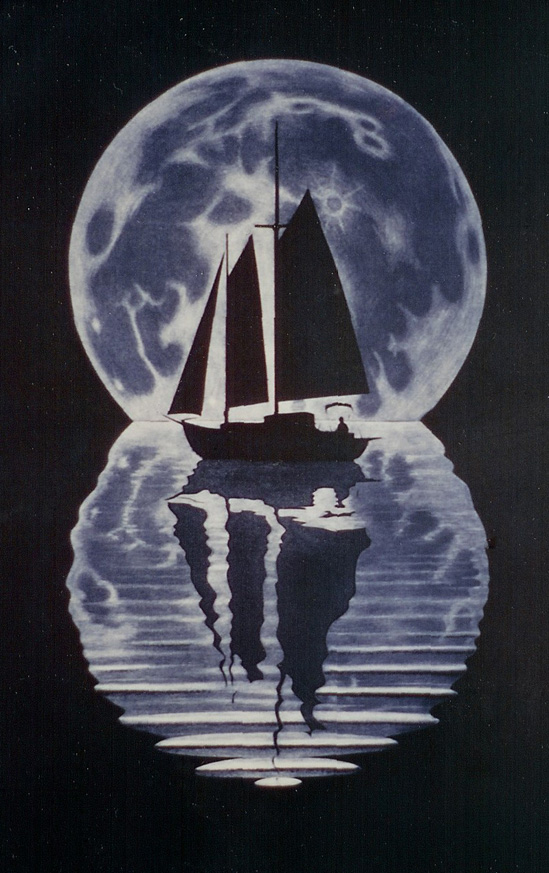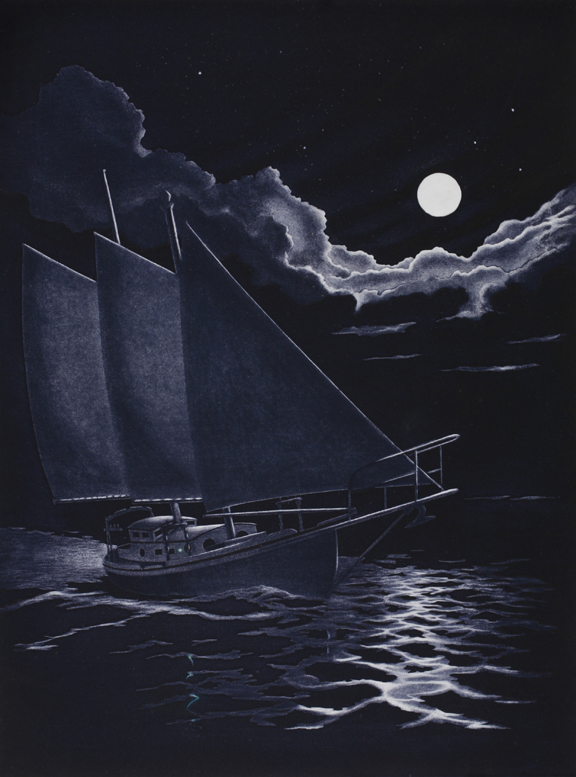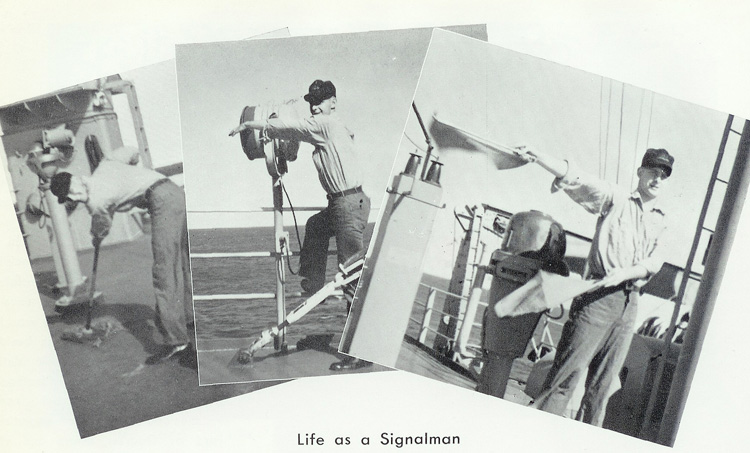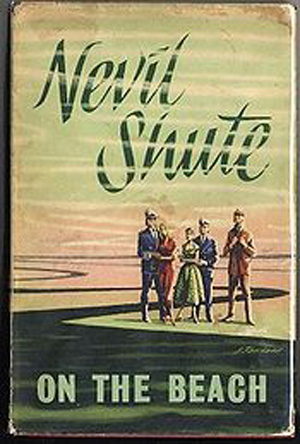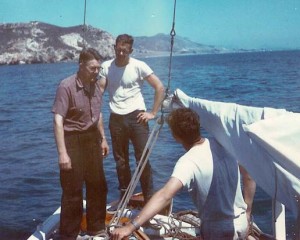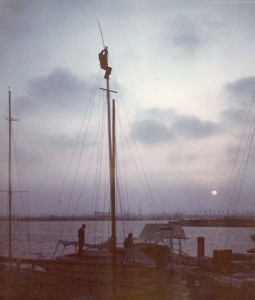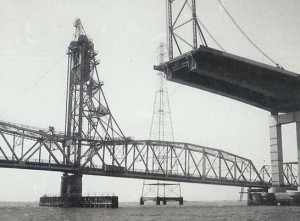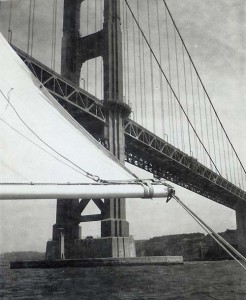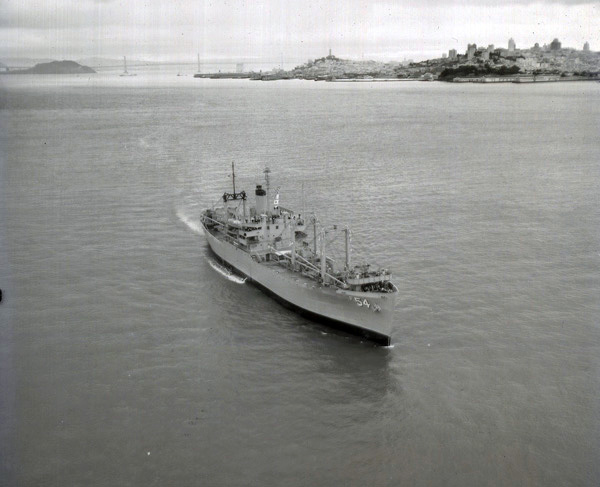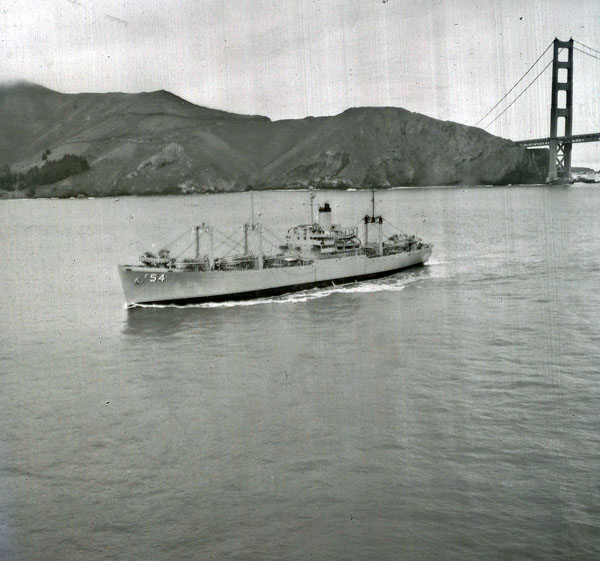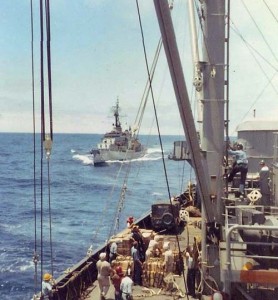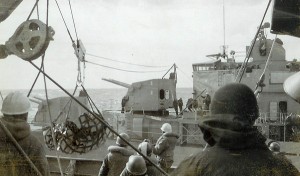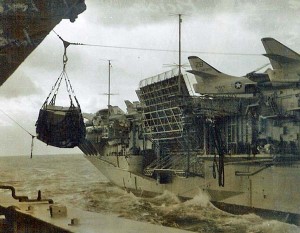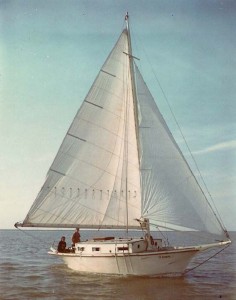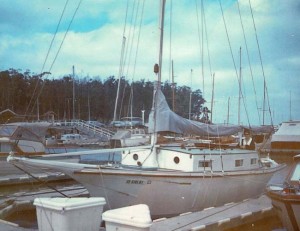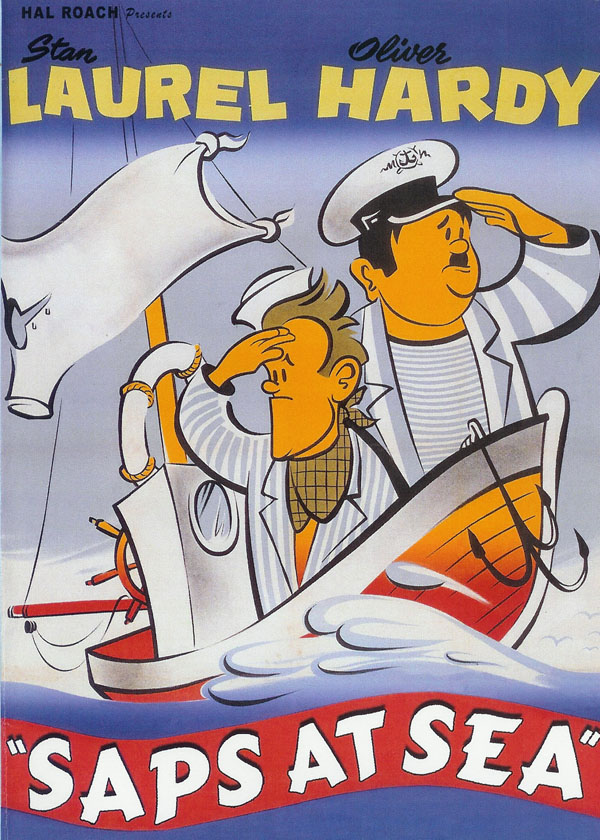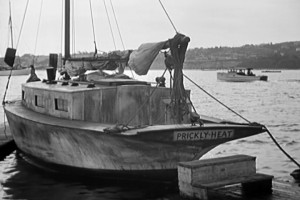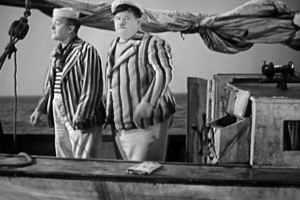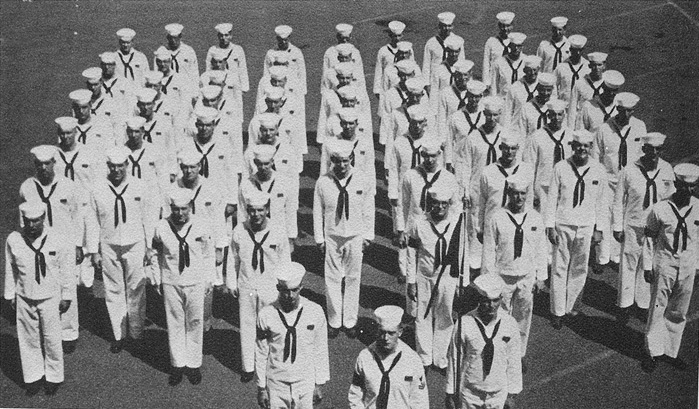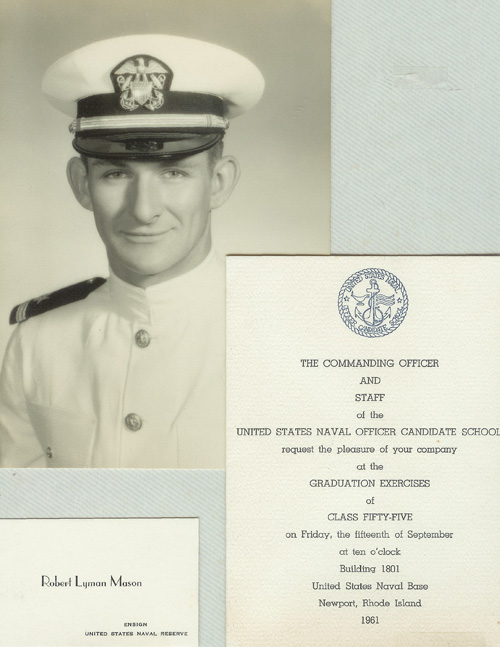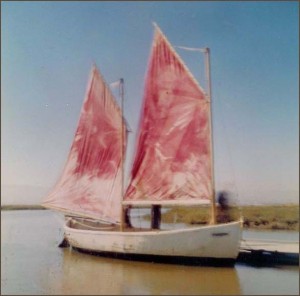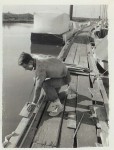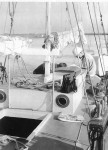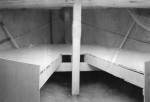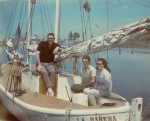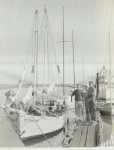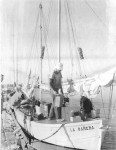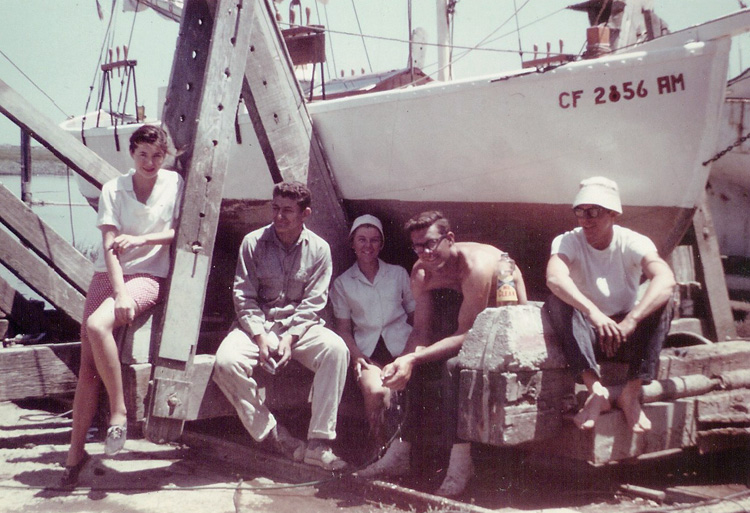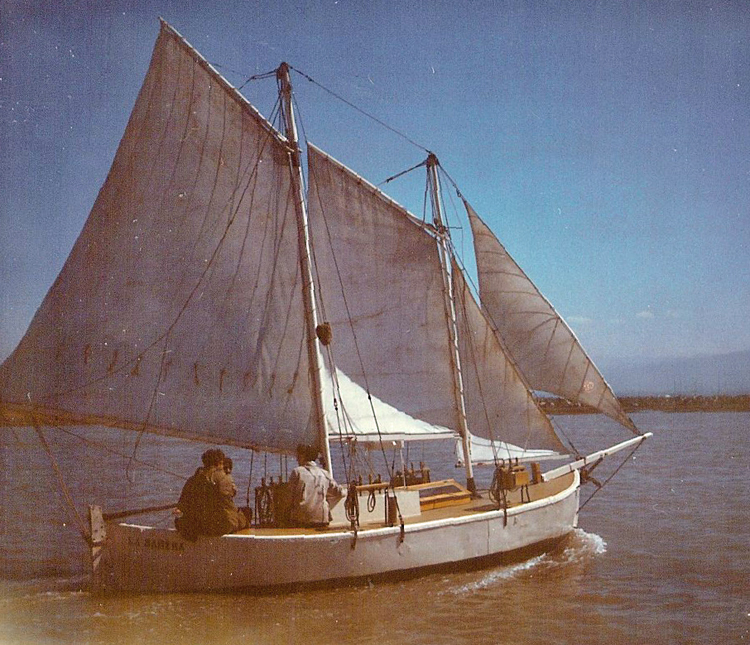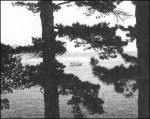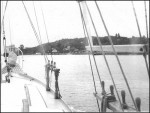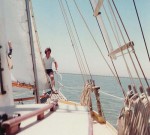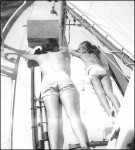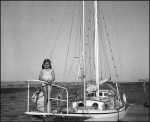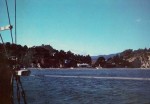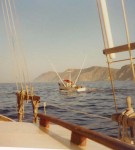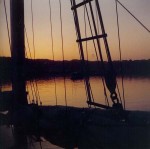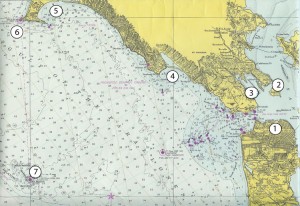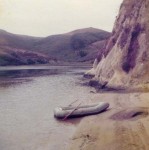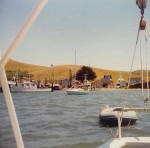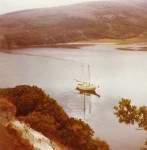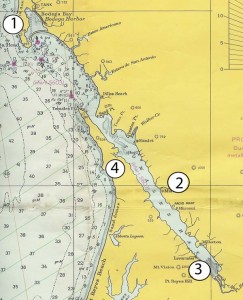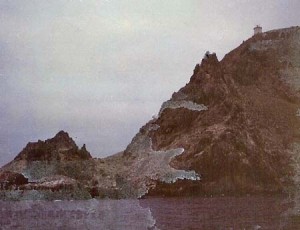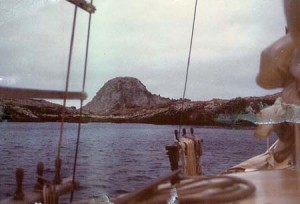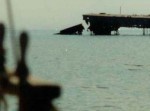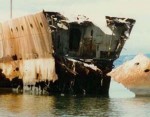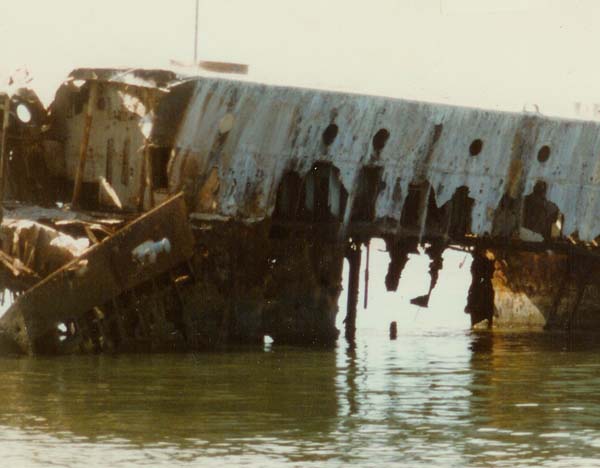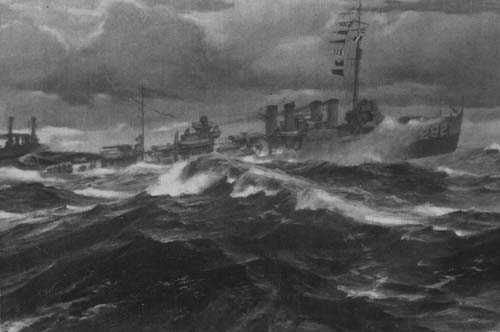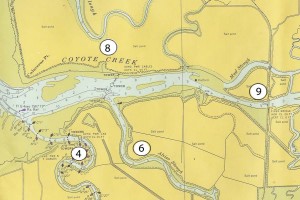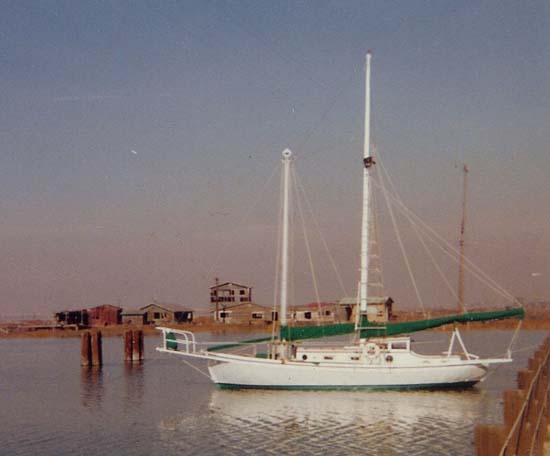SEA STORIES
6. GAMBELLA Forever
During the years that I spent working as an engineer I could afford to own a boat like the GAMBELLA, but somewhere around 1980 I decided to take a stab at being an artist. I always had some native ability in that area and I wanted to give it a try as a living. Working as a professional artist is all about creativity and a lot more fun than working as an engineer. Engineering, at least in the manner in which I was employed, was quite uncreative work. It was, however, much more lucrative. Consequently, I sold my boat to help finance my conversion from engineer to artist.
Having spent so many years restoring, maintaining and sailing the GAMBELLA, I was intimately familiar with every inch of her, and to this day I can still come up with a decent rendering of her various aspects strictly from memory. She had become engrained in my being and reflected my personality to a high degree, perhaps even to a fault. It is not surprising, therefore, that she should appear in various works of art that I was to accomplish. Anyone who explores Uncle Rob’s Blog to any extent is bound to encounter many images of the GAMBELLA. The following image has been in use as my logo on business cards and letterheads for quite some time:
Looking back from the perspective of many years, and from the point of view of an artist, I can now see the GAMBELLA was a work of art. She was the creative outlet I needed to balance my rather mundane employment, and just as an artist’s work is always his or her work even it if is subsequently sold, she is still mine in that respect.
I think the following image and poem express my feelings adequately:
Moon Ship
It was a warm summer night and the schooner GAMBELLA stretched her pretty legs. Countless hours of my personal attention were paying dividends as she moved south with a nimble grace. The Bay was smooth and flat. The tide was on the flood and a gentle breeze was steady over the port quarter. Then a full Moon rose over the East Bay hills and its muted light danced on the surface of the water.
Oh, to linger in that reflection,
A brief passage of near perfection.
Dream-like it was, but alas it was real.
It needed some water under the keel.
I knew we were running out of bay,
But didn’t want it to end that way.
I made an image to hang on my wall,
And in it GAMBELLA still stands tall.
The hiss of the wake’s trailing froth,
The creak of the rig working aloft,
These things I hear when I can see
The rare moment that transported me.
So when life’s voyage comes to an end
I’d make that passage once again.
And if to heaven I have gone
There I’ll sail her on and on.
R. L. Mason
Mendocino, CA
2009
4. What’s in a Name
Aboard the PICTOR MARU (as she was affectionally known to her crew) there were usually 17 or 18 officers, and when not on duty, they would congregate in the wardroom which served as a lounge and officer’s mess. Quite a few of the officers were from California, Arizona, New Mexico and Texas. This being the case many of them spoke at least a little pigeon Spanish. There was one supply officer of Greek descent. His name was Sotir Lukakis (last name changed). Since we were a supply vessel we had a fairly large contigent of personnel involved in supply functions. Sotir had a division of men that reported to him and his top petty officer was a first class of Mexican descent named Jesus Menendez (last name changed).[For the purposes of this story when Jesus is in itialics read it as the spanish pronounciation of Hey-soos, and when not in italics read it as the English pronounciation of Gee-sus].
Sotir seemed fascinated with the idea that someone would actually have the name Jesus. One little scene that took place in the wardroom frequently involved Jesus arriving with some papers that required Sotir’s signature. Sotir would take care of the business and then Jesus would be on his way, but as soon as he was out of hearing distance Sotir would invariably comment to those officers that happened to be present, “Can you imagine naming your child Jesus. That is really wierd.” An episode of this nature would repeat itself once or twice a week. The other officers who had some familiarity with spanish knew that Jesus was a common name in latin American countries, and they saw nothing unusual in that name. Most of them thought Sotir was somewhat strange to bring up the subject as often as he did, but after a while they just started ignoring him when he went on his little rant.
Sometime after our first trip to WESTPAC I went home, on leave, to visit my folks. When I arrived at my parent’s place in the middle of the afternoon my mother and a little old lady friend from across the street were having tea and cookies, so I sat down with them to chat. The neighbor was Greek by birth, and I saw an opportunity to clear up a point I was curious about. I asked her:
“Does the name ‘Sotir’ have a specific meaning in Greek?”
“Why yes, it means savior”
Oh Ho! Now I began to see the humor behind Sotir’s fascination with the name Jesus. After my leave, I returned to the ship armed with this new information, but I kept it under my hat. It didn’t take long. Late one afternoon when most of the officers were gathered in the wardroom Jesus arrived carrying some documents for Sotir to sign. As usual, after he had left Sotir started in, “Can you imagine naming your child Jesus? That is really weird.” As usual, everybody just ignored him. I let a few seconds pass and then I spoke up:
“Hey, have any of you guys ever wondered what the name “Sotir” might mean in Greek? I just happened to run across this little fact the other day.”
Everybody stopped what they were doing and looked up at me.
“Don’t tell me ‘Sotir’ means ‘Jesus’ in Greek,” one officer exclaimed.
“No, but close. It means “savior'”
Well, that brought down the house.
“HOW DID YOU FIND THAT OUT?” Sotir shouted over the laughter.
Poor guy, from that day on they never called him anything but “savior” in the wardroom.
3. Classified Material
My first assignment upon reporting aboard the PICTOR was Assistant Navigator, and this was more or less at my request because the subject interested me, and they didn’t have anywhere else to place me on short notice. Later, however, a new officer came aboard who was a direct transfer from the California Maritime Academy. He knew navigation, but was not really up to speed on things “Navy.” As a result, I was made Communications Officer and he became Navigator. There was no way I could avoid it, I had, after all, been formally trained for that position.
Being Communications Officer meant supervision of radiomen and signalmen. These were a good group of guys, smart and motivated, so not much supervision was required on my part.
It also meant being in charge of encryption and decryption of classified communications, and that consumed the bulk of my time. Classified communications usually arrive designated either CONFIDENTIAL, SECRET, or TOP SECRET. Being as we were an auxiliary vessel and not a combat vessel there was hardly ever anything classified above SECRET. In addition, each message was also assigned a precedence dictating how quickly a message had to be processed. These were ROUTINE, PRIORITY and FLASH. Sometimes it was difficult to understand why certain communications were categorized as they were. For instance, if a message came in while I was in my bunk sound asleep, which was designated SECRET and PRIORITY it meant a radioman had to roust me out of my sleep to go and decrypt the message without delay. We actually received very few messages with this type of designation, but one that always came that way was the monthly WESTPAC Venereal Disease (VD) Report. This report ranked each of the usual Navy ports of call in the Western Pacific by the number of cases of VD per one thousand liberties. What was so SECRET about that? Why the PRIORITY precedence? After a while I would, upon discovering the nature of the report, shut down the decryption machine, go back to my bunk and finish the process at a decent hour in the morning.
After I had been Communications Officer for a period time, the Executive Officer called me into his office to tell me I was being assigned the collateral duty of Classified Material Control Officer. I reminded him that I was only cleared up through SECRET and I knew that we had at least one TOP SECRET document aboard the PICTOR. “No problem,” he informed me. At the Captains discretion they were giving me an interim TOP SECRET clearance which would be specific to this command. He then gave me the combination to the TOP SECRET safe which was located in the crypto room and sent me off to my new responsibility.
Well. . .okay. I went directly to the crypto room, opened the safe and took out a single envelope stamped, in big red letters, TOP SECRET. I remember reading this document and feeling as if I were privileged to some kind of holy of holies. The nature of this document was such that I can tell you its nature without divulging its secret. In fact, I have long ago forgotten the actual secret. Remember, this was circa 1963 and the cold war was in full swing. The secret was simply a longitude and latitude somewhere in the middle of the Pacific Ocean (I never bothered to plot it on a chart). This spot was to be a rendezvous where whatever was left of the U.S. Navy would assemble should WWIII break out, resulting in a full nuclear exchange between the USA and the USSR. It assumed that the only thing left of the Navy might be ships that happened to be at sea at the time of the war. How long would such a war last, an hour maybe, an hour and a half? At any rate this was where where the remainder was to gather, scratch their heads and try to decide what to do next.
One is strongly reminded of the novel by Nevil Shute entitled On the Beach (1957). The story imagines a circumstance as described above.
It was made into a movie with the same name (1959) starring Gregory Peck and Ava Gardener. The phrase “on the beach” is a long-standing naval expression used to describe the location of any crew member who has left the ship and gone ashore. I wonder if the book and movie in any way influenced the document I viewed in 1963.
The radio shack also had a machine that was considered okay for use up through SECRET. As I remember it was called JASON. It involved messages which were scrambled by a random number generator when sent and unscrambled upon receipt. It was the wave of the future, unlike the hand operation in the crypto room which, I think, was called ADONIS. I remember one unique occasion when I was awakened in the middle of the night:
“Mr. Mason! Mr. Mason! We’ve got TOP SECRET coming through in the clear on the JASON system!”
“What? That’s impossible!”
“No! No! it’s true. You had better come and take a look!”
I threw on some clothes and stumbled up to the radio shack. I was greeted by the first class radioman.
” Sir, I cleared everybody out there and sent for you. We’re only cleared for secret.”
I went in, sat down in front of the teletype machine and started reading. Sure enough, the message began TOP SECRET, FLAG OFFICERS ONLY (Commodore or above). Whoa! I certainly wasn’t a flag officer, but I read the message any way. It wasn’t my mistake.
At that time the Vietnam situation was just beginning to heat up, and as I remember, the message was simply an evaluation of the infiltration of North Vietnamese troops into South Vietnam. My reaction at the time was: “This is TOP SERECT? I read this in Time Magazine.”
As I was reading, the machine suddenly came to an abrupt halt! There was a pause, of perhaps a minute, and then it came to life with: DESTROY THIS MESSAGE IMMEDIATELY! or words to that effect. Apparently someone at the communications center had loaded a tape on the the wrong system and the mistake was caught in progress.
These things all happened almost fifty years ago, and I sincerely doubt that they are of any signifigance today. One thing is for sure, WWIII hasn’t happened yet so I am still here and able write Uncle Rob’s Sea Stories.
2. ESCAPE from L.A.
So there we were with a new (old) boat about 500 miles from her new home in the San Francisco Bay. My buddy Doug and my Dad volunteered to help bring her up the coast. But one little piece of business had to be attended to before we departed. The previous owner had fixed a TV antenna to the top of the mast and I could hardly wait to remove that eyesore. Since my Dad was the lightest of the three of us we put him in the bosun’s chair and sent him up with a set of tools. There probably has never been a person born who was better with tools than my Dad. Here is a shot of the three of us and one of Dad up the mast:
(click on image for larger view)
Anyone who has ever sailed a boat up the California coast knows that it is a very hard upwind slog. This is especially true after rounding Point Conception northwest of Santa Barbara. From that point on is almost directly into the teeth of the prevailing wind. If you have auxiliary power, the easiest way to make this trip is to head up the coast under power early in the morning before the wind comes up, and then duck into a harbor or anchorage in mid-afternoon when the Northwest wind starts to blow hard. Since the ESCAPE was still largely unfamiliar to us this is the strategy that we adopted. It turned out to be a good decision.
I was fresh out of the Navy and was quite confident in my ability to navigate up the coast, but problems of a different sort soon began to plague us. We left Marina Del Ray early in the morning, the day after taking possession of the boat, but by the time we had rounded Point Conception the battery was dead and we couldn’t start the engine. We soon discovered that the generator didn’t work. Apparently, the previous owner simply charged the battery every time he wanted to go for a sail and that was sufficient for a day or two. But it was definitely not adequate for the kind of trip we were making. Eventually, we made it to the San Luis Obispo Pier under sail. We removed the generator and took it into town where we had it rebuilt. This put a bit of a crimp into our schedule, but we were soon underway again.
Another memory of that trip that is forever engrained in my mind involved my coming up from below after a short nap and seeing the bow of a ship bearing down on us from our wake. It was a bright but hazy day and Doug and Dad were looking forward, but coming up from below, I was looking aft. The name of the ship was clearly visible. GLORIA MARU was about to run us down. I quickly spun the wheel hard to starboard and I believe the ship altered course to port. We missed but it was a bit too close for comfort.
Our next little misadventure happened as we were entering Moro Bay Harbor. There, right in the middle of the channel, was a piledriver and attendant tug. They blocked our vision of the channel markers. We decided to give them a wide berth, but we made it a little too wide and ran aground. We were stuck pretty hard and couldn’t get off. Eventually, the tug took pity on us, tossed us a line and towed us back to the channel.
The next day we started up the coast again but the wind came up early and we took refuge at San Simeon. From San Simeon north it’s a long haul to the next harbor at Monterey. So we were up early, hoisted the anchor, and hit the starter button only to have the starter motor shaft shear in half. Groan! What next? We put the anchor back down and sat pondering what to do. There was no provision for cranking this engine by hand, so we knew we had to have a starter. Finally, we decided to leave the ESCAPE anchored fore and aft and go get another starter. This meant leaving the boat there for a week while we returned to our jobs until the next weekend.
Upon returning a week later with a new starter we found everything just as we had left it. We installed the new starter and took off early the next day for Monterey. This time it was just me and Doug and we arrived at Monterey Harbor without any further problems. The following day was one of the most pleasant of the trip. Our destination was Santa Cruz Harbor, and this allowed us to actually sail across Montery Bay in very pleasant weather. After that it was Half Moon Bay, and then up the coast to the Golden Gate. Here is a photo of us entering the San Francisco Bay, and also one of the new San Mateo Bridge under construction that we passed on our way to Palo Alto:
2. U.S.S. PICTOR (AF-54)
After receiving my commission from OCS, I was ordered to Naval Officer Communications School also at Newport, Rhode Island. It was located adjacent to OCS and came under the same general schools command. The training was aimed at qualifying officers to be in charge of communications for a ship. It was a two month program and I lived at the Bachelor Officer Quarters (BOQ) where I shared a room with another officer. It wasn’t much but it was a big improvement over the barracks at OCS. The training was mainly in radio communication and encryption. The main encryption device that we used was a copy of the machine known as “The Enigma” used by the Germans during WWII. It was used for classified messages up through the level of SECRET. I don’t have any good stories to tell about that training. It was all fairly routine, and upon completion I received orders to the USS PICTOR (AF-54) at Alameda, California. After a short leave I reported aboard late one rainy afternoon. The PICTOR was a refrigerated stores ship and it got underway for WESTPAC (Western Pacific) the very next day. Here is what she looked like leaving the San Francisco Bay:
As I remember, crossing the Pacific took about two weeks. I was told that it was an unusually rough passage, and I recall being seasick most of the way. However, one does get used to that kind of thing eventually, because for the following two years that I served aboard the PICTOR I was never seasick again. I got my sea legs so-to-speak. The PICTOR was 460 feet in length, had beam of 63 feet and a loaded draft of almost 26 feet. Her dead weight tonnage was 6946 tons. I seem to remember her maximum speed was about 16 knots. She had five holds, two of which were refrigerated. Her primary mission was replenishment at sea of other naval vessels. We were, in essence, a floating grocery store. Here are some shots of what it looked like when she was doing her job:
(Click on image for larger view)
Being as I was a brand new Ensign, I was junior officer aboard the PICTOR. Among officers, that spot is often referred to as “George.” If there was a duty that nobody else wanted to do it was always “Let George do it.” Somewhere along the line it was decided that a “Cruise Book” should be produced for this particular trip to WESTPAC and, you guessed it, “George” was selected to oversee this effort. Upon reaching Japan, that meant a number of trips to Tokyo to deal with the Daito Art Printing Company. All in all, this was a very interesting experience, and I learned a lot about Japanese culture in the process. Daito had a very nice guest house in which they put me up, and I was treated royally. I can remember thinking “yeah. . . let George do it.” Here is what the cover of the book looked like as designed by “yours truly”:
1. A Boat from an Old Movie
After I got out of the Navy my wife (the former Lynne Harley) and I were living and working in San Francisco. I worked for Matson Terminals Inc. as an industrial engineer, and she worked as a claims authorizer for the Social Security Administration. By this time my buddy, Doug Balcomb, had purchased the GAMBELLA and was busy getting it operational again. Lynne and I decided we wanted a boat too, and we began to haunt various harbors and boating centers looking for something that would fill the bill. I also carefully read all the yacht sales ads in various sailing magazines. One thing I noticed was there seemed to be a lot more boats for sale in Southern California than in Northern California. So one weekend we flew to the Los Angeles area and took a look around down there. One sales person took us under her wing and showed us a number of “blue water” boats. One boat in particular seemed to be a good fit for our wants and pocketbook. Her name was ESCAPE and she was a 31 foot sloop. The ESCAPE was not a new boat but she looked solid enough. She was a wooden boat, roomy and nicely finished down below. The sales lady arranged for a marine survey and also for the owners to take us for a sail on a subsequent weekend. Here is what she looked like:
The owners did take us for a short sail and “showed us the ropes.” One interesting point they made about the history of the ESCAPE was that she had been used in an old movie called “Saps at Sea.” I filed that away in the back of my mind and almost forgot it entirely until just recently.
When I started work on the new “Sea Stories” category for Uncle Rob’s Blog I remembered the title of the movie and plugged it into Google. Sure enough there it was, a 1940 movie featuring Laurel and Hardy. I purchased a copy. It was typical of that team, just silly slap stick, and they made the boat look really old and decrepit even though it was about 25 years younger at that time. Here is the cover of the DVD and a couple of frames showing it as it looked in the film:
(click on image for larger view)
To make a long story short, we purchased the ESCAPE, and in my next post on this subject I will tell you how the ESCAPE escaped L.A.
1. U.S. Naval Officer Candidate School
Around the beginning of 1961 it became fairly obvious to me that my number would soon come up for the draft. The cold war was in full swing and the draft boards were active. I already was leaning toward the Navy because of my new found interest in things nautical. In addition, there were three reserve Naval Officers in the office where I worked at the time and they went on a campaign to convince me to go for a commission. One of them told me that I might work at it for the rest of my life and never achieve the status of “gentleman” but if I got a commission in the military I would automatically be considered a “gentleman.” I’m not sure how important “gentleman” status was to me, but I was also told that being an officer would give me supervisory experience that would look good on my resumé. Well . . . okay, I decided to go for the commission.
At that point in my life the shortest route to a commission in the Navy was Naval Officer Candidate School in Newport, Rhode Island. One of the basic requirements for acceptance into OCS is that you already have a college degree, and I had a BS degree in engineering from Oregon State University. So I made the right connections, took the test and was accepted into the program. Another factor in my decision was that I had read The Caine Mutiny by Herman Wouk when I was in high school. It contains fascinating descriptions of OCS at its inception during WWII. I found the whole idea intriguing. So, come the middle of May I entered the school and began the four month process to make me a Naval Officer. Candidates entered OCS in an enlisted status, SAOC (Seaman Apprentice Officer Candidate) and received their commission upon graduation. If you failed to graduate you remained enlisted for the rest of your obligation. Here is what we looked like early in the program:
Before I left for OCS I met a fellow who had been through the school before me and he advised me to volunteer for the duty of mail clerk. He said the constant company of sixty other guys can be quite wearing and the only person who gets to be by himself for short periods is the mail clerk who gets to walk to the post office twice a day and pick up the mail for the company. What good advice, and how I relished those walks to pick up the mail. Other than that it was live together, eat together, sleep together, attend classes together and march together every where we went. Here is the barracks in which I lived with sixty other guys for four months:
Instruction came in six different academic divisions: Seamanship, Navigation, Operations, Weapons, Orientation and Engineering. My favorites were the first two because they were general knowledge that anybody who was going to do anything at sea should know. Engineering was fairly easy for me because I already had an engineering degree and my former instruction was still fresh in my mind. However, many candidates without engineering degrees often had trouble with that category. Then, of course, there was marching. We were thoroughly instructed in how to march.
Somewhere around the midpoint of the program we were issued OTUs (Officer Type Uniforms). It was the khaki version and was essentially the same uniform worn by Midshipmen 4th Class (Freshman) at the Naval Academy. At about that same time our liberty privileges were increased and we were often free on the weekends.
Newport, Rhode Island was a very nautical town. Besides the Navy presence there were large harbors for boats and yachts. One of my favorite pastimes when on liberty was wandering up and down the docks of the various boat harbors and gazing at the vast collection of boats. People who take part in this activity are sometimes humorously referred to by boaters as the “Shore Committee”.
On one such occasion, while I was engaged in this pursuit, I came across a famous yacht with which I was familiar from reading various sailing magazines. It was the PINTA (name changed) a schooner which every year took part in the Bermuda Race and, as I remember, on at least one occasion, won the race. She was an absolutely beautiful yacht and, although it was basically the same rig as the LA BAÑERA, it was a “swan” whereas my old boat was an “ugly duckling.” It was meticulously maintained and as I was standing there drinking in its every detail, a duffel bag was suddenly tossed from the cabin to the top of the main hatch. On the bag in big broad letters was the word “ANNAPOLIS.” It was followed shortly thereafter by a young man with a neatly trimmed crew cut. He immediately saw me standing there gazing down at the boat.
“Are you a plebe?” he asked. I was wearing my OTUs.
“No, I’m an OC.”
“What’s an OC?”
“Officer Candidate” I replied.
“Well, you look like a plebe to me.”
Plebe is the term for 4th Class Midshipmen (freshmen) at the Naval Academy and is derived from the Latin “Plebeian.” We had a short conversation during which his attitude was arrogant and condescending. It turned out that he was a was on his summer break between his third and forth year at the Naval Academy. When he returned in the fall he would be a 1st Class Midshipman (senior), an upperclassman. During the conversation I realized he wouldn’t graduate until the following June at which time he would receive both his degree and his commission. On the other hand, I already had a degree and since I was more than half way through the four month program at OCS I would receive my commission long before he did. That, in turn, would mean that in our future naval careers, if all other things were equal, I would always be considered senior to him. I can’t remember my exact words, but I informed him in an off-hand manner of this little circumstance, then I executed a snappy RIGHT FACE and sauntered off down the dock, as casually as possible, making it a point not to look back.
I have to say that after you have marched around continually for four months with sixty other guys you do get rather good at it, and toward the end we looked more like this:
Finally, graduation time rolled around. We all attended the ceremony and at the end tossed our hats into the air as was traditional. We also observed another little tradition at OCS; after you were commissioned you paid a dollar to the first enlisted man who saluted you. Knowing this, the Chief Petty Officer assigned to our company stationed himself strategically on the steps of the barracks, and as we all returned from the commissioning ceremony he collected an easy sixty bucks.
1. In The Beginning. . .
In the beginning there was LA BAÑERA. When I was in high school my buddy from way back, Doug Balcomb, and I were hot rodders. We built cars and raced them at the local drag strip. Following high school we abandoned that pursuit while we worked our way through college. After that was behind us we were in the mood to try something different.
“Why don’t we get a boat?”
“A boat, you say, humm . . .”
In the local paper under classified ads we found a boat listed for $100.00. We made a call and met the owner at the Palo Alto Harbor. It wasn’t much, but what could you expect for that kind of money? It was an old steel lifeboat that someone had poured concrete into for ballast. There was a fin welded to the keel and two stubby masts with faded red canvas sails rigged in a lateen manner. We paid the price, borrowed an outboard motor, motored out to the middle of the South Bay, raised the sails and learned to sail by trial and error —lots of errors.
Little did I realize that this little adventure would set a course for much of the rest of my life. Because of it I developed an interest in things nautical, and that led me to join the Navy when my number came up. The Navy led me to . . . ah, but I’m getting ahead of myself.
Because the boat was just a big (22 feet) open hull we named it LA BAÑERA (the bathtub). But, being as we were former hot rodders, we were not content to leave well enough alone, and almost immediately set about to make some improvements. The photo below, circa 1960, is the earliest one I have and it shows that the foresail has already been converted to a gaff rig:
(click on image for larger view)
In the following year we made an extensive list of improvements including:
1) A complete deck with dog house.
2) Berths and a wood-burning stove below.
3) Installation of an old Kermath one cylinder inboard engine.
4) A completly revamped rig and new sails (gaff rigged schooner).
Because we were not exactly wealthy, this was very much a do-it-yourself project with used equipment scrounged here, there and everywhere — hot rodders are good at that. The old photos shown below should give a rough idea of our efforts:
Gradually things began to take shape:
(click on image for larger view)
Here is one my favorite photographs of all time. I realize it won’t mean much except to a few relatives and close friends, but to me it is sort of a “happy days” shot of my youth when we were all so innocent:
From the left: Lynne Harley (destined to become my wife several years later), next is me, followed by my sister Irene (see Irene’s Creations under The Gallery), then Doug Balcomb and his brother Stan. As I remember, the photo was taken by Doug and Stan’s father, Jean Balcomb, and shows the ways of the Palo Alto Boat Works at its original location in the Palo Alto Yacht Harbor. The following photo shows LA BAÑERA at her best:
One little prank that we used to pull was to take our girl friends sailing in the late afternoon and sort of accidently on purpose stay out a little too long. The tide would run out and leave us stranded on the mud flats overnight — darn! However, it was always nice and . . . well, cozy down below. As I remember, one set of parents once called the Coast Guard to try and find us, but what could they do without any water!
We eventually sold LA BAÑERA to a woman who thought it was so cute! She wanted it for her kids to play with. We tried to explain to her that this boat needed almost constant attention in the way of maintenance. She passed that off with, “Oh my kids will do that.” So we just shrugged and accepted her money (I don’t remember the amount). I do recall seeing the boat, perhaps six months later, and it looked like a derelict — long abandoned.
All in all, we had a lot of fun and learned much in the process.
5. . . . and Yon
Up and Down the Bay
Having thoroughly explored the South Bay we started to venture further afield. There were numerous excursions to destinations such as San Francisco, Sausalito, Angel Island, Yerba Buena Cove, and one memorable trip up the Petaluma River.
(click on image for larger view)
And Out the Gate
Eventually, we left the Bay entirely, usually proceeding north along the coast to destinations such as Bolinas Bay and Drake’s Bay. Each trip found us going further afield. We rounded Pt. Reyes and ended up in Bodega Harbor with
its substantial commercial fishing fleet. But our favorite destination was Tomales Bay which is directly south across Bodega Bay from Bodega Harbor. The distance is about ten miles.
Points of Interest: (click on image for larger view)
(1) San Francisco
(2) Angel Island
(3) Sausalito
(4) Bolinas Bay (also click here)
(5) Drake’s Bay
(6) Point Reyes
(7) The Farallon Islands
The best time to enter Tomales Bay is in the morning at high tide before the wind picks up. The entrance is fairly shallow and sometimes the combination of an ebb tide and the Northwest wind can made it extremely rough. The Bay itself is long and narrow and it has this shape because it sits right on top of, and is formed by, the San Andreas Fault. At the foot of the Bay is Inverness where you can pick up groceries, gas etc. On the east shore, at about the half way point, is the town Marshall which has a boat works should you need one. Approximately across from Marshall and a little to the north is White Gulch — my favorite anchorage.
(click on image for larger view)
Points of Interest:
(1) Bodega Harbor
(2) Marshall (also click here)
(3) Inverness (also click here)
(4) White Gulch (also click here)
The winds for sailing on Tomales Bay are rather flukey. They change every time you pass by a low gap in the Tomales Peninsula, but the scenery is superb. The resident human population is very low and the surroundings are primarily bucolic. On the peninsula there is a population of elk.
The Farallon Islands
On two occasions I visited the Farallon Islands. The largest island has an anchorage on the north side called Fisherman’s Cove. It is only big enough for one boat (maybe two) to swing at anchor and is only an alternative in fairly calm weather. The bottom of the cove is composed of large boulders and crevasses, and I had heard it was a very easy place to lose an anchor. I stopped there once for an overnight on a return trip from the Bodega area, and I didn’t get much sleep. Immediately upon arriving, the boat was covered with a swarm of flies. Fortunately, I had a can of bug spray to discourage them, but I had to use the whole can. The cove is surrounded by lounging sea lions and at the slightest disturbance there would arise rounds and rounds of barking. There is usually a naturalist stationed on the island, and I could see one watching my every move when I arrived, but since I made no attempt to go ashore, which is prohibited, he eventually lost interest. That occasion and the following day turned out to be a very wet trip, so the only photos I have are water damaged, but here they are for what they are worth:
(click on image for larger view)
4. Thither . . .
DD 305
Here is a sight in the South San Francisco Bay that can only be seen up close by boat. It is about three miles north of the Dumbarton Bridge on the east side of the Bay. It is almost directly east of the entrance to the Port of Redwood City. These photos are 35 to 40 years old so maybe not as much can be seen today:
(click on image for larger view)
What is seen is what remains of the USS Thompson (DD 305). She has been at this location since 1944, and is the last of the “Four Pipers.” She was commissioned at the Mare Island Navy Yard in August 1920, a little late for an active part in WWI. She was one of 273 flush-deck destroyers commissioned between 1917 and 1922. By WWII they were approaching obsolescence but still managed to play a role in that conflict. The Thompson was sold in June of 1931 and at one point served as a bar in South San Francisco, but during WWII she was scuttled at her present location and used as a target for pilots training at nearby Moffett Field Naval Air Station.
Here is a depiction of what she would have looked like in action:
Drawbridge
In the previous post I mentioned points of interest that can be seen by sailing south from Palo Alto, but there is one more in that direction that should be noted that is of historical significance. It is called Drawbridge and is located about as far as one can go by boat at the south end of San Francisco Bay. Today it is a ghost town but in the 1920s it was a thriving little village. The chart below shows it’s location (9):
(click on image for larger view)
Points of Interest:
(4) Guadalupe Slough
(6) Alviso Slough
(8) Abandoned Duck Club up Mowry Slough
(9) Drawbridge
The history of Drawbridge starts with the building of a railroad line across Station Island in about 1876. Station Island is formed by Warm Springs Slough (now called Mud Slough) on the north side and Coyote Slough (0r Creek) on the south side. Both of these waterways were navigable and thus required by federal law to remain open. Consequently, the railroad had to provide a drawbridge at each slough and hire someone to operate them. This was done, and somewhere in the mid 1870s a shack was built to house the drawbridge operator. Word spread that the area was excellent for duck hunting and fishing. Soon, other shacks were built along the railroad tracks and a whole village sprang into existence. During prohibition the “town” was very popular because the only way to get to it was by boat or railroad, a fact which insulated it from local law enforcement. To this day access is still quite limited. You can hike out along the railroad tracks north from Alviso for about two miles or arrive by boat. Below is a photo of the GAMBELLA moored Mediterranean style to the railroad trestle in about 1980:
Categories
- THE GALLERY
- Uncle Rob's Art
- 3D Works (stills) I
- 3D Works (stills) II
- 3D Works (stills) III
- 3D Works (video)
- Design & Abstract I
- Design & Abstract II
- Design & Abstract III
- Figurative Works I
- Figurative Works II
- Landscapes I
- Landscapes II
- Largest Art Project
- Nautical and Marine Images (video)
- Nautical and Marine Images I
- Nautical and Marine Images II
- Nautical and Marine Images III
- Nautical and Marine Images IV
- Portraits
- Still Life Images
- Stump Hollow Photo Essay I
- Stump Hollow Photo Essay II
- Uncle Rob's Mendocino Shop
- The Five Sense Series
- Irene's Creations
- Works by Don Mason
- Works by Don Mason II
- Works by Joseph de Borde
- Painting by Albert Robbins
- Art by Leslie Masters Villani
- Paintings by Nellie Harriet Parker
- The Art of Bee Yearian
- Works by Evie Wilson
- Uncle Rob's Art
- SCHOONER MOON BOOKS
- SEA STORIES
- ONE DOZEN AND TWO ESSAYS
- Cousinhood
- Art by Definition
- Cake Mixed Economy
- Marriage Anyone?
- Sex and/or Violence
- Searching for Truth
- The Philosophical Roots of Science
- Stepping Stones and Stumbling Blocks
- On Being Good
- Teaching By Example
- The Basic Law of Civilization
- Where Goeth Evil?
- A Modern Empircal "Religion"
- Knowledge as Wealth
- PAPERS AND ARTICLES
- FAMILY STORIES
- BOOK REVIEWS
Archive
- December 2021
- October 2020
- June 2020
- September 2019
- July 2017
- March 2017
- December 2016
- November 2016
- October 2016
- August 2016
- July 2016
- June 2016
- May 2016
- March 2016
- February 2016
- February 2015
- January 2015
- February 2014
- December 2013
- November 2013
- August 2013
- June 2013
- August 2012
- July 2012
- April 2012
- March 2012
- February 2012
- November 2011
- September 2011
- June 2011
- May 2011
- April 2011
- March 2011
- February 2011
- January 2011
- December 2010
- November 2010
- October 2010
- September 2010
- August 2010
- July 2010
- June 2010
- May 2010
- April 2010
- March 2010
- February 2010
- January 2010
- December 2009
- November 2009
- October 2009
- September 2009
- August 2009
- July 2009
- June 2009
- May 2009
- April 2009
- March 2009
- February 2009
- January 2009
- December 2008
- November 2008
- October 2008
- September 2008
